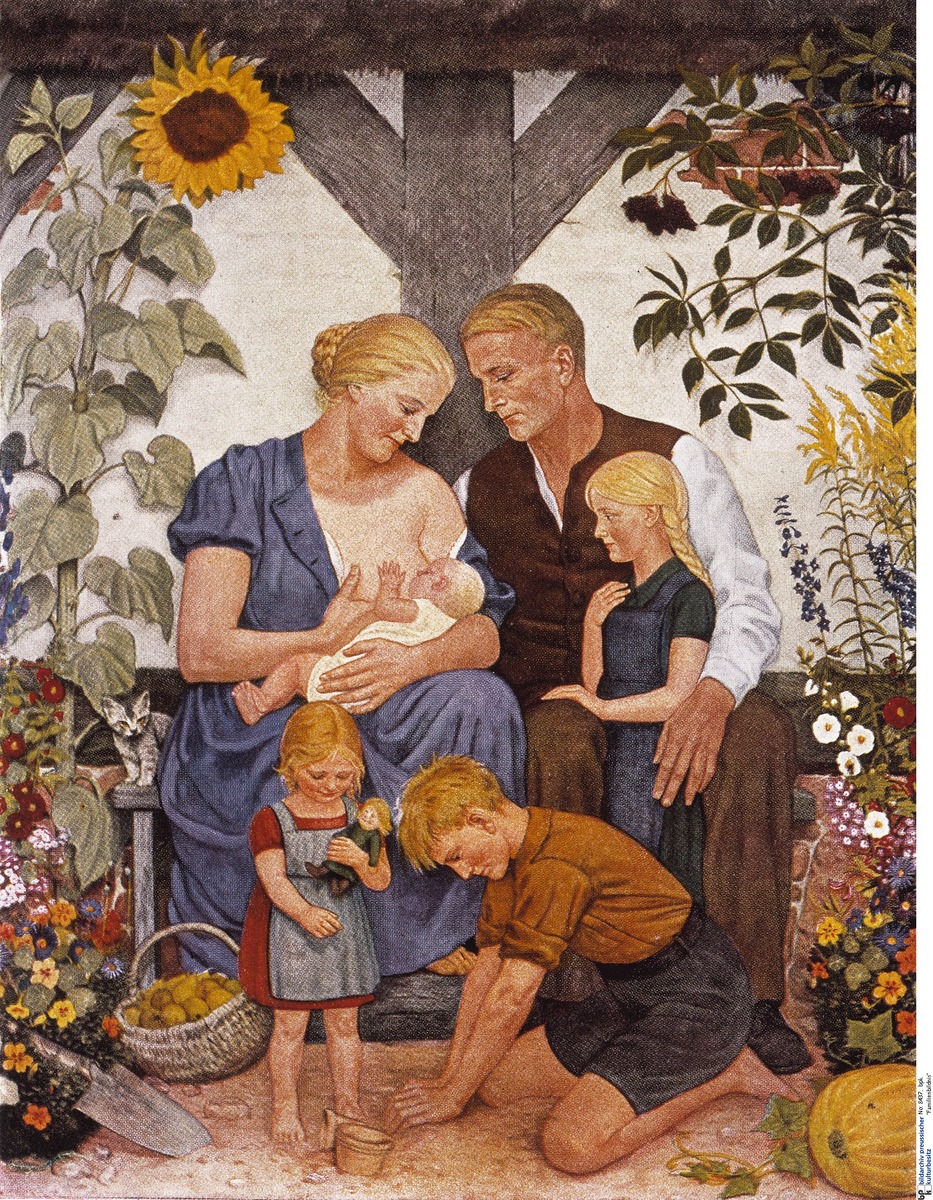Abstract
Like many of their socially conservative contemporaries, the National
Socialists regarded the social and economic changes that had occurred
after the First World War as a source of social corruption. Falling
birth rates, rising divorce rates, later marriages, and growing numbers
of working women—all this was seen as symptomatic of a sick society.
Therefore, the Nazi regime promoted a return to patriarchal values and
gender roles, presenting these changes as their ostensible
justification. Early marriage and large families were praised as the
ideal. According to National Socialist thought, women were to make home
and children their central concern, whereas men were supposed to earn
enough to support them. In reality, however, the Nazis were less
concerned with restoring the traditional social order than with giving
the family a central place in the regime’s military and racist
worldview. Early marriage and high birthrates were supposed to maintain
the competitiveness of the German people in the ongoing battle with
“inferior” races. In other words, the image of the family as the
“nucleus of the nation” served chiefly to ensure that future generations
of soldiers would be conceived, born, and raised.
The Aryan Family (undated) is a
print after a painting by Wolfgang Willrich. It depicts what could be
described as the quintessential Aryan family. With their sunshine-blond
hair, strong jaw lines, chiseled “Nordic” features, and rosy-red cheeks,
the members of this family of six could have easily appeared as “Aryan”
ideals in the Nazi propaganda series “Blood and Soil.” The clothing of
the boy in the foreground seems to identify him as a member of the
Hitler Youth, while the traditional rustic clothing of the others links
them to the rural population so idealized by the regime. Symbols of hard
work, fertility, bounty, health and vitality, and connection to the land
abound. The family’s home, a half-timbered, thatched-roof construction,
is an excellent example of the
völkisch architecture celebrated by
the Nazis, and, as such, provides a fitting backdrop for this idyllic
family scene.
